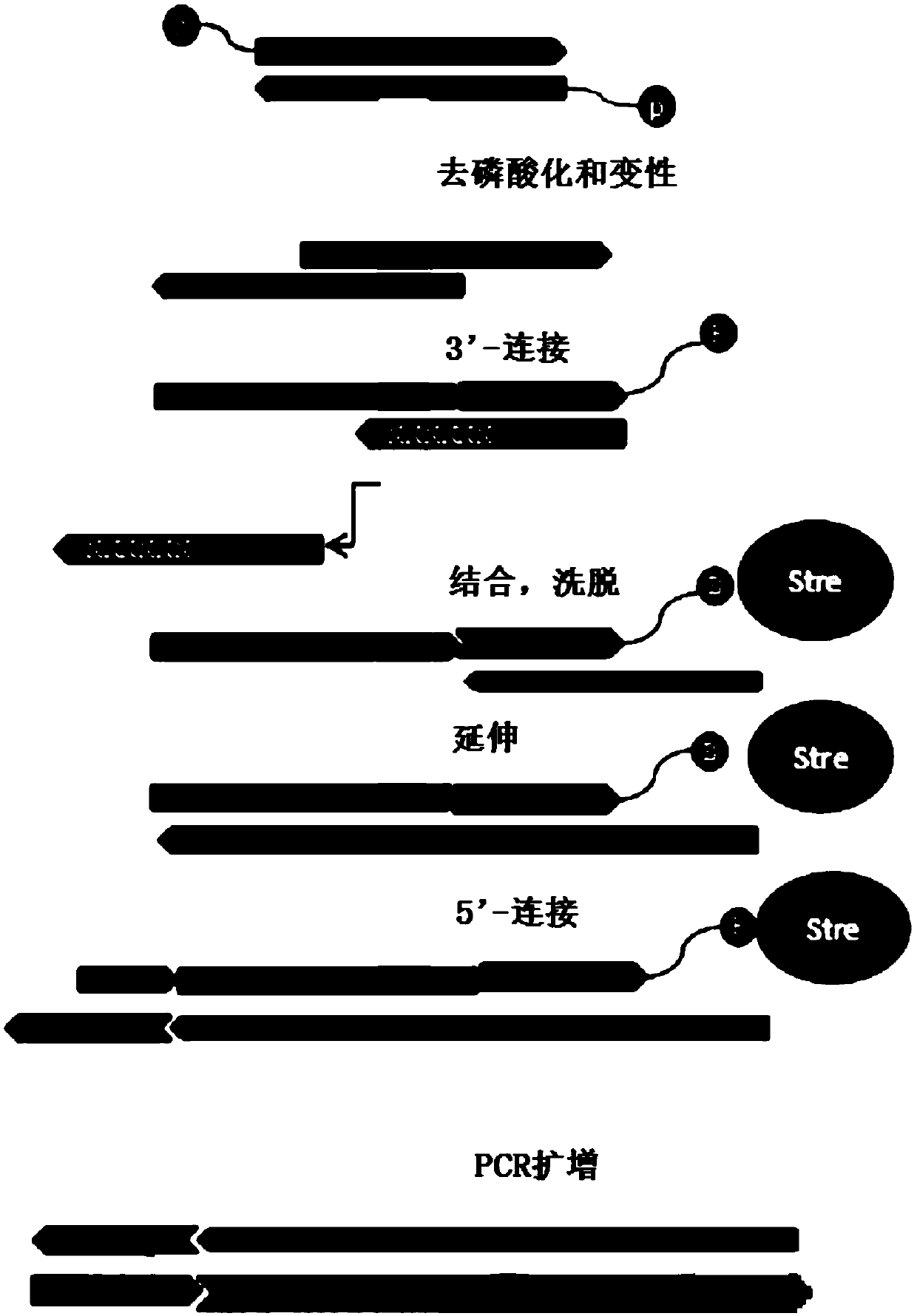Method for treating single-stranded DNA, and applications thereof
A DNA pairing and single-strand technology, which is applied in biochemical equipment and methods, microbial measurement/inspection, library creation, etc., can solve the problems of missing single-strand DNA and low utilization rate of sample molecules, and improve the utilization rate of molecules , low detection limit, and the effect of expanding the detection range
- Summary
- Abstract
- Description
- Claims
- Application Information
AI Technical Summary
Problems solved by technology
Method used
Image
Examples
Embodiment 1
[0044] Embodiment 1 provides a method for constructing a sequencing library based on single-stranded DNA (technical route such as figure 1 shown), the experimental samples used the positive / negative plasma standard HD777 and HD779 purchased from Horizon (standard product numbers match the data shown later). The adapters and sequence primers used in the experiment are shown in Table 1 below.
[0045] Table 1 Primer sequences used in DNA library construction
[0046]
[0047] Wherein, N in Table 1 represents a random sequence, which can be any one of A, T, C, and G. * stands for thio modification, which means thio modification of the base in front of *. Taking the sequence of SEQ ID NO:3 as an example, the first * from left to right (that is, the number from the 5' end to the 3' end) represents, Thio-modify the preceding base. The purpose of thio-modifying the base is to prevent the exolytic activity of the polymerase from digesting the primer. dd stands for dideoxy modif...
Embodiment 2
[0086] Example 2 Library targeted capture
PUM
 Login to View More
Login to View More Abstract
Description
Claims
Application Information
 Login to View More
Login to View More - R&D
- Intellectual Property
- Life Sciences
- Materials
- Tech Scout
- Unparalleled Data Quality
- Higher Quality Content
- 60% Fewer Hallucinations
Browse by: Latest US Patents, China's latest patents, Technical Efficacy Thesaurus, Application Domain, Technology Topic, Popular Technical Reports.
© 2025 PatSnap. All rights reserved.Legal|Privacy policy|Modern Slavery Act Transparency Statement|Sitemap|About US| Contact US: help@patsnap.com



